Bloodfin tetra - Aphyocharax alburnus
Scientific name: Aphyocharax alburnus
Common name: Bloodfin tetra
Family: Characidae
Usual size in fish tanks: 6 - 8 cm (2.36 - 3.15 inch)
014
Recommended pH range: 6.5 - 7.5
Recommended water hardness: 8 - 18°N (142.86 - 321.43ppm)
0°C 32°F30°C 86°F
Recommended temperature range: 20 - 28 °C (68 - 82.4°F)
The way how these fish reproduce: Spawning
Where the species comes from: South America
Temperament to its own species: peaceful
Temperament toward other fish species: peaceful
Usual place in the tank: Bottom levels
Natural Habitat
The Bloodfin Tetra, Aphyocharax alburnus, is native to South America. You can find this species in various regions, including Brazil, Paraguay, and Argentina. They thrive in slow-moving rivers and streams with plenty of vegetation.
Diet and Feeding
Bloodfin Tetras are omnivores. In their natural environment, they consume a diet of crustaceans and insect larvae. In captivity, they should be fed a varied diet consisting of high-quality flake and pellet foods. Supplement their diet with live foods, such as bloodworms and brine shrimp, 2-3 times a week to ensure optimal health and coloration. Regular feeding of a well-balanced diet will help maintain their vibrant colors and overall well-being.
Identifying Males and Females
In Bloodfin Tetras, males are generally more colorful and display a more pronounced hooked shape to their anal fin. Females, on the other hand, tend to have a fuller and rounder body shape, especially when carrying eggs. The difference in coloration and body shape can help in distinguishing between the sexes.
Breeding Information
Breeding Bloodfin Tetras is relatively straightforward. They often form pairs and breed spontaneously, even in a community tank. To set up a breeding environment, provide plenty of broad-leaved plants or a spawning mop where the eggs can be dispersed. The female will scatter the eggs throughout the tank, sometimes even jumping out of the water to do so. Since Bloodfin Tetras lack parental care, it’s crucial to remove the adult fish after spawning to prevent them from eating the eggs or fry. Adding glass beads or marbles to the substrate can help protect the eggs by providing a safe space underneath.
Longevity
With proper care, Bloodfin Tetras can live up to 10 years in captivity. Maintaining excellent water quality and providing a suitable diet are key factors in ensuring a long and healthy life for these fish.
Overview
Aphyocharax alburnus is best kept in groups of at least 6 individuals, as they are natural shoalers. When kept in small numbers, they can become shy and may hide frequently. Bloodfin Tetras are easy to care for and thrive in a well-maintained aquarium. They are peaceful fish and make an excellent addition to a community tank, provided that water conditions are kept optimal.

 Bloodfin
Bloodfin  Panda
Panda  Green
Green  Blind
Blind 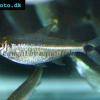 Kennedy
Kennedy  Blue
Blue  Discus
Discus  Pink
Pink  Bucktoothed
Bucktoothed  Black
Black  False
False  Silver
Silver  Hemigrammus
Hemigrammus  Dash-dot
Dash-dot  Rummy
Rummy  Glowlight
Glowlight  January
January  Head
Head  Garnet
Garnet 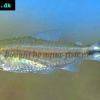 Rummy
Rummy  Gold
Gold  Red
Red  Ember
Ember 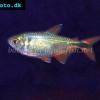 Buenos
Buenos  Colombian
Colombian 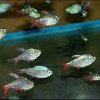 Ecuador
Ecuador  Bleeding
Bleeding  Flame
Flame 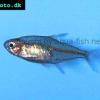 Georgett’s
Georgett’s  Griems
Griems  Kitty
Kitty 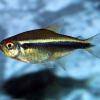 Black
Black  Firefin
Firefin  Loreto
Loreto  Black
Black  Lemon
Lemon  Redback
Redback  Rosy
Rosy  Serpae
Serpae  Savanna
Savanna  Red
Red  Blue
Blue  Silver
Silver  Ceros
Ceros  Napo
Napo  Diamond
Diamond  Red
Red  Rainbow
Rainbow  Emperor
Emperor  Cardinal
Cardinal  Neon
Neon 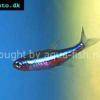 Green
Green 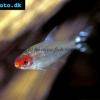 False
False  Glass
Glass  X-ray
X-ray  Penguin
Penguin